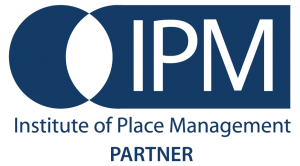The We Are Placemaking team were back in the press this week, discussing the role of Artificial Intelligence with placemaking and the public realm.
Featuring in Retail & Leisure International, We Are Placemaking’s Ian explored AI and if it is now in a position to expand people’s experiences in public and retail spaces.
You can read the article below.
The rise of Artificial Intelligence is scary – there are no two ways about it. Whether it be writing novels, giving us therapy or cloning the voices of artists like Drake – amongst all the other commands we can give obedient chatbots for them to do in a matter of minutes.
So, unsurprisingly, many people fear the robots we are advancing could completely turn on us – a debate which saw Chat GPT’s Founder Sam Altman testifying before the Senate about his chatbot
creation earlier this year.
But there is always a flip side. And while many may see the rise of AI as a threat to their jobs (/lives…) those open to the concept – when regulated – could see it as opportunistic rather than apocalyptic…
One space where AI is being welcomed is the world of ‘placemaking’ – the process of animating public realms for social and economic wellbeing. This can come in the form of art installations, gaming activations – anything that enhances the space and draws a closer connection between people and place. AI chatbots are, of course, already experts in the field. When asked what placemaking and its relevance in London is, ChatGPT came back with the following: “Placemaking is particularly important in London, given the city’s size and density. With so many people living and working in close proximity, it is essential to create public spaces that are both functional and enjoyable to use. By investing in placemaking initiatives, London can create a more liveable and attractive city that is better suited to the needs of its residents and visitors.”
This took the bot a grand total of 20 seconds to conjure up. Impressive, isn’t it? And that’s before you’ve seen the works of AI image – generating software Dall-E, which can produce photorealistic renders when prompted with any command, whether it be for a “Placemaking outdoor space sculpture” project or a “Summer placemaking installation”.
Designers and placemakers will no doubt be fearing the worst, but it’s not time to start desk clearing just yet. While AI is clearly a beneficial tool that can fuel ideas, support writing processes and produce convincing visuals – elements of human conscience are still essential in the world of creation.

Take writer Charlie Brooker, for example, who recently revealed that, when he requested ChatGPT to generate a new episode of Black Mirror, the bot was actually unable to…
“It comes up with something that, at first glance, reads plausibly, but on second glance, is not,” Brooker told Empire, stating that the bot failed to come up with “any real original thought”.
It’s safe to say, AI can only go as far as the information we provide to it, as opposed to generating completely new ideas of its own. Similarly, this applies to the creative area of placemaking. Whether it’s understanding how the general public interact with public spaces, the interpersonal skills required to build rapport with clients, or the project management needed to piece together all the facets of a successful project – these all come to play to when bringing placemaking to life.
At We Are Placemaking, where I work as a Creative Director, for example, we animate public spaces with a wide range of events – all of which would not be possible without our team of Event Producers, Creative Producers, Health and Safety Advisors and Operations teams – working in tandem with clients, suppliers and external consultants for security and technical production, as well as consulting with members of the public to gather their perspective too.
So, while we are more than open to new and exciting ideas, technologies and tools, it is clear that AI lacks the depths and capacity to be able to puzzle all of the pieces together.
AI cannot do the job for a placemaker or designer, but rather, support them in doing so. It can, for example, provide us with vital information on how we experience the spaces we visit. Wi-Fi data can be assessed to find out which spaces customers use most in shopping malls, airports, F&B and retail stores. Google Maps location history can even be tapped into, to discover where people spend the most time – another tool that can educate us on our design and placemaking projects in a matter of minutes. Scary?
Perhaps, but very handy too. In knowing where customers spend more time, services in these areas can be adjusted and improved to better serve their users.
The hot topic of AI is by no means going away, with everyone looking to make their footprint in the sphere of the metaverse and use it as an exciting new means of connectivity. But in-person human interactions are fundamentally at the core of design and placemaking. So, while it can seem daunting, it’s important for placemakers, designers and developers to remain open to new and exciting ideas, technologies and tools – maximising the opportunities they present to us and understanding how we can apply them to our projects. See AI as a trusty companion, rather than an arch enemy. For now,
at least…
You can view the article in Retail & Leisure International here.





